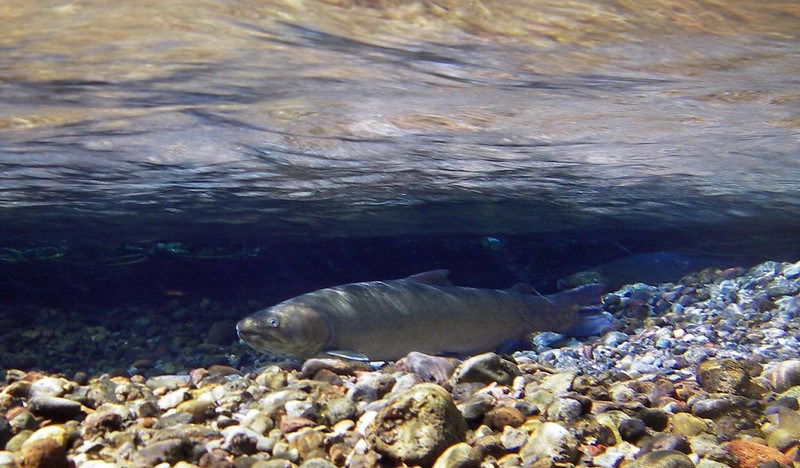OSU researchers create tool to help protect native fish from hybridizing with non-natives

CORVALLIS, Ore. (KTVZ) – Oregon State University researchers have created a tool to assess the risk of hybridization among native and non-native fish, a development that could aid natural resource managers trying to protect threatened or endangered freshwater fish species.
The introduction of non-native species poses challenges to native species, including competition for resources and habitat, exposure to diseases carried by the introduced species and the risk of hybridization, which occurs naturally in wild populations as part of the evolutionary process.
The Oregon State research, just published in the journal Frontiers in Environmental Science, focused on two species: bull trout, a fish native to western North America that is protected under the Endangered Species Act; and brook trout, a native to eastern North America introduced in the West more than 100 years ago for recreational fishing purposes.
Bull trout were once abundant in Oregon, Washington, California, Nevada, Idaho and Montana but today are found in less than half of their historic range, and no longer exist in California. They are threatened by habitat degradation and fragmentation, blockage of migratory corridors, poor water quality, the effects of climate change and fisheries management practices, including the introduction of brook trout.
While some studies have documented hybridization among bull and brook trout, there has not been enough research to allow natural resource managers to quantify hybridization risk, the Oregon State researchers said.
“The goal was to come up with a tool that allows managers to look at the potential long-term impacts when they are planning restoration or conservation projects,” said Michael Manning, the lead author of the paper who worked on the research as an Oregon State graduate student.
The researchers developed a hybridization risk model, which could also be applied to other species that hybridize in freshwaters, such as cutthroat or rainbow trout and coho and chinook salmon.
Guillermo Giannico, a freshwater fish ecologist and a co-author of the paper, compared the model to programs people use when deciding where to live.
“In that case, there is this algorithm that combines information about distance to the nearest supermarket, cost of living, where the schools are,” he said. “This risk model we created is roughly the same. It tells you whether this is a good neighborhood for fish based on the gradient of the stream, the substrate at the bottom of the stream, the temperature of the water, how much the water discharge changes through the year.”
In Oregon, 55% of bull trout habitat is in the northeastern part of the state within the John Day and Powder/Burnt River basins. Additional bull trout habitats are located in the Malheur/Owyhee, Klamath, Deschutes, Willamette Valley and Columbia River drainage basins.
The researchers studied 47 sub-basins, a U.S. Geological Survey term for a subsection of a river drainage area. Sub-basins encompass an average area of about 1,125 square miles. Of the sub-basins they studied, 11 had only bull trout, 16 had only brook trout and 20 had both species.
In Oregon, brook trout are present in 9.8% (120 miles) of bull trout spawning habitat. The model showed that an additional 57 miles of bull trout spawning habitat would be at extreme hybridization risk if brook trout were introduced in those areas.
The model also identified 13% (177 miles) of all bull trout spawning habitat as being in the moderate to extreme hybridization risk category. Of these 177 miles, 90% are in northeastern Oregon.
The researchers note that the model is valuable because of its ability to identify hybridization risks in small sections of streams (to the 100-meter scale) whether brook trout already exist in bull trout spawning habitat or are absent.
This level of detail allows natural resource managers to identify individual reaches of streams that might be candidates for brook trout removal, to model potential hybridization risk if bull trout are reintroduced, or to incorporate scenarios of brook trout introductions or expansion, they said.
Other co-authors of the paper are Ivan Arismendi and J. Andres Olivos, both of the Department of Fisheries, Wildlife, and Conservation Science in Oregon State’s College of Agricultural Sciences.